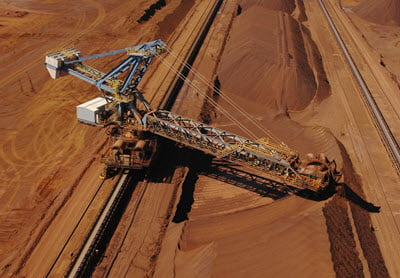Chinese companies have successfully commodified lithium iron phosphate (LFP) batteries for energy storage systems. They are cornering the market with vast scale and super-low costs in the same way they did for the solar PV sector.
Super-cheap LFP floods the Chinese market
Global lithium-ion battery production reached the 1 TWh milestone in 2023 and exceeded actual demand by 65 GWh. Much of this overproduction was in LFP batteries in China. LFP has as a growing market share in the electric vehicle (EV) sector and is the dominant type used in battery energy storage systems (BESS).
Data from CRU Battery Value Chain Service
A dramatic influx of investment has led to an increasingly crowded LFP sector in China. The market can be characterised as an oligopoly. The majors have made good utilisation of their capacity, but for smaller players, it can be cheaper to manufacture and store materials and cells compared to idling the plant and losing sales contracts.
This has led to burgeoning inventories of LFP cathode materials and cells, which manufacturers are attempting to offload at discounted prices. A deal was recently made for an entire 5 GWh LFP BESS for $100-110/kWh at the system level. The performance and specifications of this stock of cells are more aligned to the requirements of BESS and are not necessarily suitable to be used in large volumes in EVs. The upshot is that China has successfully commodified LFP batteries for energy storage.
Chinese companies have battery costs down to an art
The overproduction driver of LFP uptake is compounded by its cost advantage. Leveraging data from the CRU Battery Cost Model, average production costs of Chinese-made LFP prismatic cells (the predominant type used in BESS), fell dramatically in 2023.
This can largely be attributed to cost savings within the cathode, especially the price of lithium carbonate. Following a 15-month uptick that saw the price of lithium rise to record highs, investment poured in and supply overshot demand in 2023, resulting in falling prices.
Lithium accounts for up to 35% of the cost makeup of LFP in 2023. Every other aspect of battery costs, from processing to graphite anodes to gigafactory yield rates, have been so well-optimised by Chinese engineers that only incremental improvements are being made. Lithium carbonate is the current frontier in cost reduction, and the overall cost of the cell closely follows the price of lithium.
This too is an area where the Chinese can eke out savings. The largest battery manufacturers are vertically integrated with stakes in lithium mines, while refineries in China are some of the lowest-cost operations globally. Thus, downstream companies are paying less for lithium chemicals compared to their Western counterparts.
Will China corner the global BESS market?
Such a ‘gold rush’ is recurrently witnessed in other industries in China, notably in the PV and polysilicon sectors. Inevitably, there will be consolidation. At some point, the lack of orders, build-up of stock and the accumulation of capital expenditure in new facilities will lead some manufacturers to failure. However, the remaining companies will emerge stronger.
Chinese manufacturers may seek to offload their burgeoning inventories into export markets. We previously explained that this is unlikely to make an impact for the EV battery market. However, it may be a different case entirely for energy storage batteries.
In recent times, LFP batteries are not necessarily interchangeable between the two applications. Cell design and requirements for energy storage are diverging from that of EVs.
There are already strong anti-dumping duties in major battery-consuming regions, and it is expensive to import lithium-ion batteries across regions. Despite this, when the prices being offered are so low, these arguments are almost irrelevant.
LFP production capacity in the rest of the world will grow as the US and Europe attempt to onshore battery manufacturing, though this comes at a cost. Western companies lack knowledge on optimized production parameters, leading to decreased factory yields, with 50% losses being common in early operation. Coupled with higher labour and electricity prices, Western-made LFP batteries will be significantly more expensive to manufacture.
China by far dominates the supply of LFP cathode, so most Western LFP battery manufacturers will continue to rely on Chinese supply of materials and other components for several years while their nascent LFP industry develops. Subsidies can enable cost-competitiveness with China in the short term, although these are not infinite and always at risk from political change.
The CRU Energy Storage Technology & Cost Service demonstrates that LFP cells produced by China will remain the cheapest on the global market, falling to as low as 50 $/kWh by 2028. Chinese companies are also spearheading sodium-ion technology, which will eventually deliver a further cost reduction.
Stationary energy storage has massive growth potential in parallel to the build-out of renewable energy infrastructure, especially solar PV. If nations start to follow their net-zero targets more closely, the demand from energy storage would easily surpass that of e-mobility.
According to data from the CRUBattery Value Chain service, an estimated 200 GWh of LFP cells intended for energy storage were produced in 2023. Actual demand was only 135 GWh, but this was still more than double the 2022 figure, in line with unprecedented growth in the PV sector.
Although the battery is just one component of the overall cost of an energy storage system, low battery prices are good news for BESS installers and will have a positive effect on demand. Without sufficient innovation and funding of disruptive manufacturing processes, it is a strong possibility that Chinese companies will push their competitors out of business in the battery energy storage market.
















